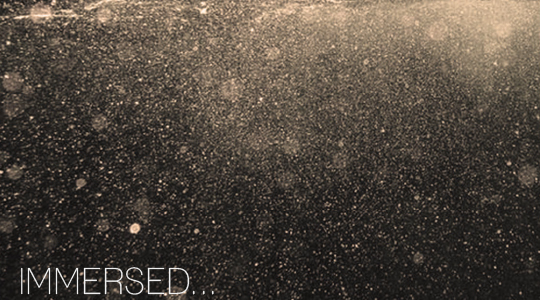Studio 17
Immersed
Magdalena Sliwinska

Studio Description
The studio is a proposal to create design interventions along the Yarra River that emphasize a new social relationship with the river from the narratives of the indigenous community to the new generations of today. The proposal seeks to re-invigorate the existing open public spaces along the river’s edge; the Northbank site. The aim of the studio is to create a new dialogue with water in a contemporary way and is inspired by the Australian Venice Biennale Pavilion and the recent conversations at MPavilion regarding the future of Yarra. The theoretical design inspirations include spiritual ecology, the coexistence of architecture and landscape architecture, urban/public space anthropology and sensorial urbanism. The studio is titled ‘immersed’ as it requires one to understand the character of the river in an embodied way. It is both the material and the process that produces this immersion.
Studio Outcomes
The research focus for the studio is to create innovative spatial interventions along, on top or through the river that reflect the history of the river as well as creatively engage public use and imagination. The third focus is for students to immerse themselves with the concept of water, fluidity and ecology and to reflect these through the design. The immersion will lead students to embodying their site through art, writing, movement and verbal exchange with the local community. The process encourages new readings of the site and innovative outcomes.
Students will be required to study the history of the river through research of historical maps and data, photography, as well as by talking to the public to understand the relationship people may have with the river. The emphasis will be made on creating an effective public space that respects the Yarra Strategic Plan and the indigenous relationship with the river. The relationship between space and metaphysics will be used as a tool to create spaces that are intimate in nature, reflective and immersive.
Students will begin working in groups on their chosen site of the Yarra’s Northbank edge and workshop possible new scenarios. Through each week’s exercises a deeper knowledge of the site will form, that will guide students to their design proposal. The final - outcome will see the culmination of the different embodied processes that intuitively and strategically reflect the nature and character of place. The studio will be engaged with Melbourne City Council, Melbourne Water, Yarra River Keeper, Koorie Heritage Trust, landscape architectural practice and local artists that will be invited each week to present and engage with the students.
Studio Leader
Magdalena Sliwinska is a graduate architect/landscape architect from the University of Melbourne. She has taught at Swinburne University, Monash (MADA) and University of Melbourne (MSD) across disciplines of interior architecture, architecture and landscape architecture. She is currently pursuing creative projects for her PhD by practice and is interested in the social, emotional and phenomenological approaches in architecture through the pursuit of creative methodologies.
Reading & Reference
Baker Lisa, 2014. Built on Water: floating architecture and design.
Beale-Ellis Sandra, Beardon Luke, 2017. ‘Sensing the city: An autistic perspective’.
Berg Rueben, Johnson Fiona, McGaw Janet, Pieris Anoma, Tootell Naomi, 2014. Indigenous Place: Contemporary Buildings, Landmarks and Places of Significance in South East Australia and Beyond.
Dreiseitl Herbert, Grau Dieter, 2005. New waterscapes: planning, building and designing with water.
Holl Steven, 2009. ‘Urbanisms: Working with Doubt.’
Goldhagen Sarah Williams. 2017. Welcome to Your World: How the Built Environment Shapes our Lives.
JA 82, Japan Architect, ‘Toward a New Cityscape.’
JA 97, Japan Architect, ‘Curving Line and Surface.’
Jodidio Philip, 2012. Landscape Architecture Now.
McGaw Janet, Walliss Jillian, Greenaway Jefa, 2014. Re-Making Indigenous Place in Melbourne: Towards a Victorian Cultural Knowledge & Education Centre.
Otto Kristin, 2005. Yarra: the history of Melbourne’s murky river.
Ross Tom, Roper Michael. 2017. Among Buildings.
Roth Gabrielle, 1998. Maps to Ecstasy.
Sandu Publishing 2016. Public Art Now.
Sandig Frauke, Black Eric, 2011. ‘Heart of Sky, Heart of Earth’ documentary.
Schwanhäußer Anja, 2016. Sensing the City: A companion to urban anthropology.
Sponsel E. Leslie, 2012. Spiritual Ecology: A quiet revolution.
Toto, 2015. Sou Fujimoto: Architecture Works 1995-2015.
Grieves Vicky, Aboriginal spirituality: Aboriginal philosophy, the basis of Aboriginal social and emotional wellbeing.
Walker Sophie, 2017. ‘The Japanese Garden’.
Zardini Marko, Lotus International 157, 2015. Towards a Sensorial Urbanism: City as Nature.
http://yarraswim.co/
https://www.melbournewater.com.au/about-us/our-customers/yarra-strategic-plan
https://imaginetheyarra.com.au/video-library
TRAVEL Week 2 | $16.50
ST1/17 Monday 6:15-9:15PM, MSD Room 118
ST2/17 Thursday 6:15-9:15PM, MSD Room 138